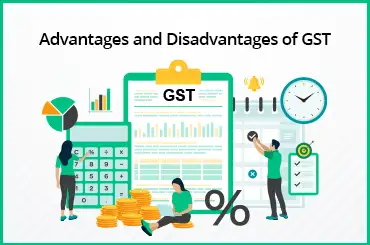A proforma invoice is one of the most commonly adopted ways to ensure that the buyer and seller are on the same page from the very start of a transaction. The words proforma in Latin stand for 'as a matter of form' which illustrates that this document is provisional in nature and not legally binding.
Once you have completed negotiations with your buyer, a 'pro forma' invoice is used to document the terms and conditions agreed upon, creating complete clarity of the scope of work, the expected timelines, and the associated costs. Implementing effective processes surrounding proforma invoices ensures that your sales teams close the highest number of deals based on their targets, with all the terms of your agreement being honored.
Read further to know what is a proforma invoice, the essential fields in a proforma invoice template, the format of a proforma invoice in detail, and the difference between a proforma invoice and other types of invoices.
What Is a Proforma Invoice?
 A proforma invoice is a non-binding preliminary bill of sale sent to the customer detailing cost and other terms and conditions of the sale for the goods and services being offered.
While the proforma invoice is not a legally binding document, it is still an essential tool for both parties to ensure there is no confusion on the relevant details of the agreement.
A proforma invoice is a non-binding preliminary bill of sale sent to the customer detailing cost and other terms and conditions of the sale for the goods and services being offered.
While the proforma invoice is not a legally binding document, it is still an essential tool for both parties to ensure there is no confusion on the relevant details of the agreement.
Now that you know what is a proforma invoice, let's understand when to use it and the purpose of issuing it.
Read Also - Request for Quotation (RFQ): Definition and How to Use
When Should You Issue a Proforma Invoice?

A pro forma invoice is usually issued when a buyer and seller have had the first set of conversations and negotiations. A pro forma invoice is a document that drives these initial conversations between both parties and helps drill down on the detailed deliverables, timelines, terms of sale, logistics, shipping as well as the associated commercials.
This document is also essential when the transaction involves international shipping policies and customs documentation.
Purpose of Issuing a Proforma Invoice

A proforma invoice is issued primarily so that the buyer and seller can have a documented way to detail exactly what the buyer should expect from the seller. Let's evaluate some of the key reasons it is generated:
Expectation setting
The seller will populate the proforma invoice template with the scope of work or deliverables the buyer will receive from the seller. This allows the seller to clearly set the expectations for the proposed sale.
Acknowledgment of deliverables
The pro forma invoice is a way for the seller to get the buyer to acknowledge the deliverables and agree, so the work can begin.
Final negotiations
Even though the preliminary talks would have taken place, the proforma invoice is helpful as it compiles all the details of the proposed sale, allowing any final negotiations to take place if needed.
Saves time
The proforma invoice ensures complete clarity for both parties by outlining all the necessary details. Doing this avoids any fundamental disagreements once the work begins.
Read Also - Best Free Inventory Management Software in 2023
Fields in a Proforma Invoice

The proforma invoice is not a legally binding document. It is meant primarily for the two parties who are about to get into a sale agreement.
While the fields can depend entirely on the agreement between you and your buyer, here are a few fields typically present in a proforma invoice template:
- Title of the document - Proforma Invoice
- Buyer name and address
- Seller name and address
- Date of invoice creation
- Date of invoice expiration
- The total quantity of goods or services
- Number of units of goods or services
- Price per unit of goods or services
- Total price
Proforma Invoice Format
There are various formats a proforma invoice can be in such as a simple Word document or a PDF document. An acceptable proforma invoice sample includes all the fields we have mentioned above and may include more.
Read Also - ABC Analysis in Inventory Management: Benefits, and Implementation Strategies
Changes in Proforma Invoice Under GST as Compared to Pre-GST Proforma Invoice

The introduction of Goods and Services Tax (GST) in India has brought about some changes in the format of proforma invoices. Following are the main differences you need to be aware of while creating a proforma invoice sample:
- All proforma invoices now have to include the GST registration number in comparison to the VAT or CST or Sales tax number for pre-GST proforma invoices.
- All proforma invoices now need to also have the Harmonized System of Nomenclature (HSN) code for goods or the Service Accounting Codes (SAC) code for services.
- The relevant GST classification (SGST, CGST, or IGST) is based on whether the supply of goods or services is within a state or interstate.
The main purpose of proforma invoices remains the same, with the addition of the above GST-related information. Moving forward, let's see what's different in a pro forma vs commercial invoice.
What Is the Difference Between Proforma Invoice and Other Types of Invoices?
The primary difference between a proforma invoice and an invoice is that the proforma invoice is not a legally binding document. A proforma invoice exists to create complete transparency between the buyer and seller regarding the terms of the sale. It cannot be used for billing or taxation purposes.
Contrarily, a commercial invoice is a legally binding document that is issued after a sale is completed. The commercial invoice details all the goods or services that have been sold, along with any other relevant details. This is the one your accounts team will use for billing and tax purposes and not the proforma invoice.
Proforma Invoice vs Invoice

A proforma invoice comes into use before a sale and is considered to be an acknowledgment of the proposed sale between buyer and seller. A regular invoice or a 'Tax Invoice' is often generated after a sale is completed and is the official document that legitimizes the sale. A buyer is legally obligated to make the payment that is due upon the receipt of an invoice, but that is not the case when it comes to a proforma invoice. This is the difference between a proforma invoice and an invoice.
Also Read - Importance of HSN Code
Proforma Invoice vs Quotation
While both documents are about a potential sale, there is a difference between a proforma invoice and a quotation. A sales quotation is an estimate, generated by the seller and sent to the buyer and is usually considered to be a part of the negotiation process. In comparison, a proforma invoice is created by the seller and sent to the buyer after they have decided to enter into a deal and verbally agreed upon the terms and conditions of the deal.
Proforma Invoice vs Purchase order

A purchase order is a document that the buyer generates and sends to the seller which contains the details of the goods or services the buyer wishes to purchase. A proforma invoice is fundamentally different from a purchase order in that a proforma invoice is issued by the seller to the buyer, documenting the agreed-upon conditions of the sale.
Upgrade Your Invoicing Process With TranZact
A proforma invoice is a key document in the sales process of every manufacturing business. TranZact enables businesses to create a proforma invoice and other 15+ key business documents for business efficiency. It supports businesses to accelerate data inputs and manage all their invoices on a single platform. This helps both parties to establish the terms of the sale conveniently before, prior to it happening.
TranZact also allows you to create GST-compliant invoices with ease, making your accounting processes more efficient. You can also share and download all the documents and invoices with a few clicks, and also email invoices to your clients directly. This streamlines everyday operations for manufacturing businesses saves time, and helps them to collaborate with each other more productively.
FAQs on Proforma Invoice
1. What is a proforma invoice?
A proforma invoice is a document issued by a seller to provide a buyer with a preliminary invoice before the actual shipment of goods or services.
2. What information should be included in a proforma invoice?
A proforma invoice should include details such as the seller's and buyer's contact information, a description of the goods or services, quantity, price, payment terms, delivery terms, and any other relevant terms or conditions.
3. Can a proforma invoice be modified?
Yes, a proforma invoice can be modified before the final commercial invoice is issued. It allows for adjustments or changes to be made based on further negotiations or specific requirements.
4. When does the seller issue a proforma invoice?
The seller typically issues a proforma invoice before the actual shipment of goods or services, providing the buyer with a preliminary invoice for informational and transactional purposes.
5. Can a proforma invoice be used for customs purposes?
Yes, a proforma invoice is often used for customs purposes to calculate import duties, and taxes, and to provide relevant details about the shipment.
6. Is GST applicable on a proforma invoice?
A buyer is meant to create a proforma invoice with the required GST details. However, since it is not a legally binding document and is not used for taxation purposes, the buyer will not be able to pay GST on the basis of a proforma invoice.
7. What is the difference between a proforma invoice and a tax invoice?
A tax invoice is generated once the sale has been completed whereas a proforma invoice is sent by the seller to the buyer prior to the sale occurring. It cannot demand payment from the buyer, while a tax invoice indicates the transaction is complete and the payment is due.
8. Can payment be made on the proforma invoice?
Since a sale has not yet taken place, at this stage the buyer has not yet made a purchase and the seller cannot expect a payment to be made on the basis of a proforma invoice. In order for a payment to be made, the sale has to be completed and an actual invoice must be generated.
9. What is the difference between proforma invoices and account sales?A proforma invoice is a non-binding estimate that is sent before a transaction, and an
the account sales statement is a binding record of the transaction sent after delivery. Additionally, a proforma invoice typically includes estimated costs such as shipping fees and taxes, while an account sales statement includes the actual costs of the goods or services, including any discounts or additional fees that may have been applied.
















